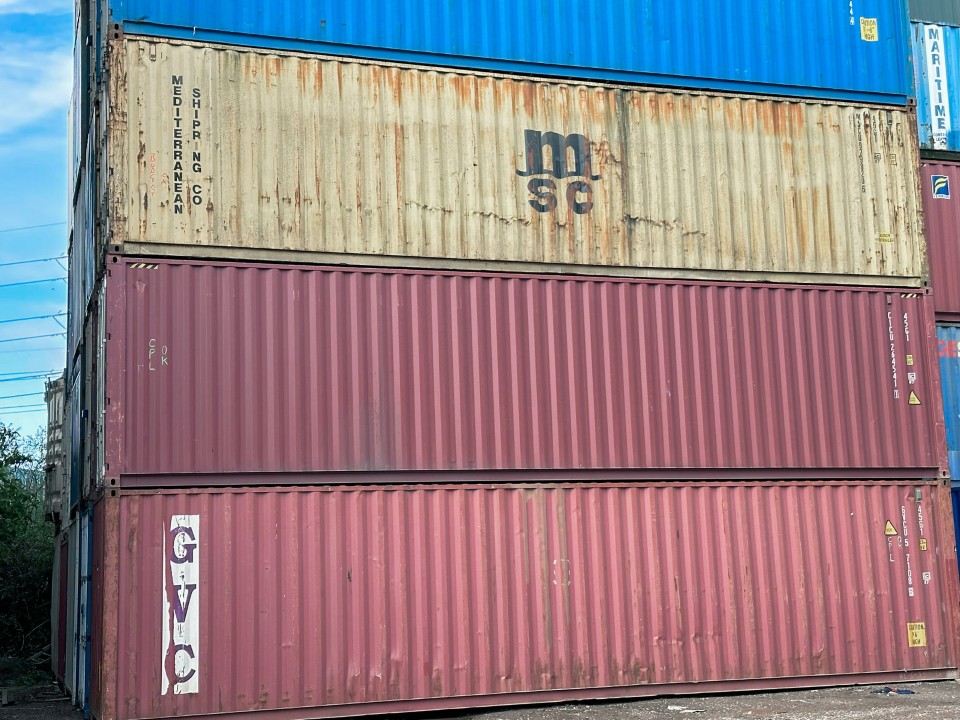
Benefits of Maintaining and Repairing Shipping Containers
Ongoing maintenance provides significant benefits:
- Cost Efficiency: Prevent costly replacements through regular minor repairs.
- Enhanced Safety: Well-maintained containers ensure goods are transported or stored securely.
- Improved Efficiency: Reduce delays by keeping doors, seals, and ventilation in optimal working order.
- Regulatory Compliance: Meet necessary safety standards across industries.
Typical Lifespan of Shipping Containers
With proper care, a shipping container can last up to 40 years or even longer. Regular inspections and timely intervention help prevent minor issues from escalating into serious problems, maximising the container’s service life.
10 Practical Maintenance Tips for Shipping Containers
- Inspect the Ground: Ensure your container is placed on a solid, well-drained surface to avoid settling and shifting.
- Secure Proper Anchoring: Anchor containers to prevent movement during storms or strong winds.
- Maintain the Doors: Regularly lubricate hinges, locks, and handles, and inspect door seals for damage.
- Treat Surface Rust: Remove rust promptly with wire brushing, then priming and repainting with metal-protective paint.
- Re-caulk Weather Stripping: Replace or reseal weather stripping around doors annually to maintain water resistance.
- Keep it Clean: Regularly sweep interiors and wash exteriors with mild detergent to prevent the buildup of damaging debris.
- Close Doors When Not in Use: Keep doors shut to prevent moisture ingress that could damage flooring and interiors.
- Avoid Excess Roof Weight: Only store weight on the container’s roof if supported adequately by corner posts.
- Clear Roof Debris: Regularly sweep off water, leaves, and snow to prevent rust or structural compromise.
- Protect Against Frost: To prevent winter damage, insulate pipes, manage heaters carefully, and drain unused water sources.
Common Types of Container Damage and Repairs
- Rust: Requires sanding, priming, and repainting to prevent further corrosion.
- Damaged Paint: Address by sandblasting, priming, and repainting exposed areas.
- Scratches and Dents: Minor dents can be repaired with hand tools; larger damage may require panel replacement.
- Holes: Patching with welded steel plates is often necessary to restore water-tightness.
- Door Malfunctions: Straighten, lubricate, and replace seals as needed for optimal security and performance.
- Broken Locks: Replace promptly to maintain container security and functionality.
- Ventilation Issues: Repair or add vents to prevent humidity and mould build-up.
- Mould: Remove promptly and address moisture sources to prevent spreading damage.
- Rotting Floors: Replace damaged plywood flooring sections with matching materials to retain structure and safety.
Can You Repair Your Shipping Container Yourself?
Minor maintenance tasks such as sanding rust spots, painting, or changing door seals are often manageable DIY projects. However, extensive structural repairs typically require specialist welding skills, heavy equipment, and full compliance with safety regulations. It’s best to consult a professional to ensure the repair work is safe, compliant, and durable if in doubt.
Protect Your Investment Today
Maintaining your shipping container is the most innovative way to extend its life, safeguard your goods, and protect your investment. If you need help with container maintenance, repairs, or sourcing a quality new or used container, we are here to help.
Contact Shipping Containers of Southampton today on 0330 0130 636 or email us at
Frequently Asked Questions
How often should I inspect my shipping container?
We recommend inspecting your shipping container at least twice a year, or after severe weather events.
What paint should I use for a shipping container?
Use specialised marine-grade or industrial-grade paint for steel surfaces exposed to the elements.
Can shipping container floors be repaired?
Yes, damaged sections of plywood flooring can be replaced without needing to replace the entire floor structure.
Is it expensive to repair a container with holes?
Minor patching can be affordable, but larger structural damage may require professional welding services to ensure safety and longevity.
Can a damaged container still be used safely?
It depends on the extent of the damage. Minor cosmetic issues can be repaired easily, but significant structural damage must be addressed before safe use.
Buy Shipping Containers
Hire Shipping Containers
Services
Areas Served
At Shipping Containers of Southampton, we serve locations across the South of England. Our hiab delivery coverage includes Reading, Portsmouth, Swindon, Basingstoke, Guildford, Maidenhead, Camberley, Eastbourne, Eastleigh, Bracknell, Bournemouth, Brighton, Slough, Crawley, Farnborough, Weybridge, Aldershot, and Chichester. Whether you need a new or used container, we offer prompt delivery and competitive pricing.
